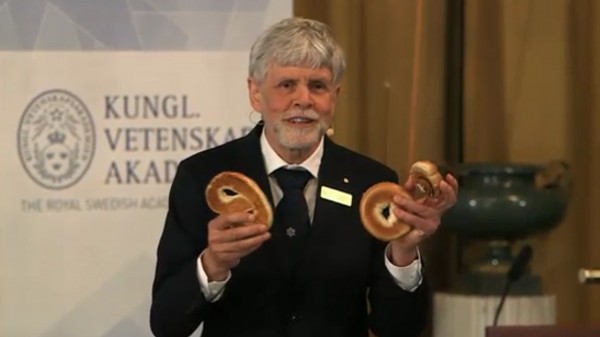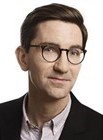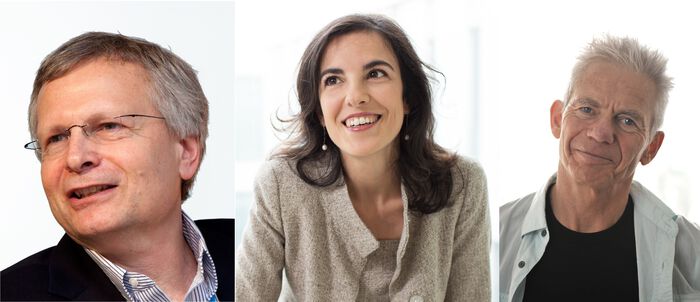Tidligere arrangementer - Side 89
Michael Whittaker from University of Glasgow will give a talk with title: New directions in self-similar group theory
Abstract: A self-similar group (G,X) consists of a group G acting faithfully on a homogeneous rooted tree such that the action satisfies a self-similar condition. In this talk I will generalise the above definition to faithful groupoid actions on the path space of more general graphs. This new definition allows us to work out the structure of the KMS state space of associated Toeplitz and Cuntz-Pimsner algebras. This is joint work with Marcelo Laca, Iain Raeburn, and Jacqui Ramagge.
Links Between Anger and Pain: The Role of Endogenous Opioids.
Rasmus Bryder (University of Copenhagen) will give a talk with title: Twisted crossed products over C*-simple groups
Abstract: A twisted C*-dynamical system consists of a C*-algebra, a discrete group and a "twisted" action of the group on the C*-algebra, i.e., the group acts by automorphisms on the C*-algebra in a manner determined by a 2-cocycle of the group into the unitary group of the C*-algebra. Whenever the 2-cocycle (or twist) is trivial, the action is given by a group homomorphism of the group into the automorphism group of the C*-algebra. We consider twisted C*-dynamical systems over C*-simple groups (i.e.,groups whose reduced group C*-algebra is simple) and how C*-simplicity affects the ideal structure of reduced crossed products over such dynamical systems.
By Oscar Puebla from the GEOMAR Helmholtz Centre for Ocean Research Kiel, Germany
Iker S. Requerey, IAC, Spain
Microfluidics of sugar transport in plants
Plants can rightly be called masters of microengineering. Their survival and successful reproduction depends on their ability to overcome a series of physical challenges during growth and when transporting matter over great distances. In this talk, we focus on the microfluidic network responsible for energy distribution (the phloem). We combine experiments on living plants and biomimetic microfluidic devices to elucidate the basic physical principles that govern sugar transport in plants. We derive a scaling relation between the characteristic sizes of the plant organs, which optimizes the rate of sugar transport. Comparison with experimental data suggests that the pipe network is operating at or near the theoretical optimum. We further consider the coupling between photosynthesis and long-distance transport. While sap with high sugar concentration has the greatest transport potential, viscosity impedes flow, a phenomena analogous to congestion in traffic flows. The optimal sugar concentration for transport in plants is 25%, sweeter than Coke (10%) but much less viscous than maple syrup (65%). Although plants have generally evolved towards the theoretical optimum, a number of unusually sweet plants exist. This group consists primarily of crop plants such as corn (40%) and potato (50%), sugar junkies of the natural world.
Dr Perrine Geraudie, Akvaplan Niva
Prof Per Mykland (University of Chicago) will give a seminar in the lunch area, 8th floor Niels Henrik Abels hus at 14:15.
In this talk I will explain how the use of functors defined on the category I of finite sets and injections makes it possible to replace E-infinity objects by strictly commutative ones. For example, an E-infinity space can be replaced by a strictly commutative monoid in I-diagrams of spaces. The quasi-categorical version of this result is one building block for an interesting rigidification result about multiplicative homotopy theories: we show that every presentably symmetric monoidal infinity-category is represented by a symmetric monoidal model category. (This is based on joint work with C. Schlichtkrull, with D. Kodjabachev, and with T. Nikolaus)
ESOP seminar. Sang Yoon (Tim) Lee is Assistant Professor of Economics at Toulouse School of Economics. He will present the paper "Task-Specific Technological Change in a Multi-Sector Economy", written jointly with Yongseok Shin.
Clara Froment, Postdoc , ITA
Join us on PharmaTox open seminar series.
Attendance is free and open for everybody. Registration is required.
ESOP organises a workshop on learning in social situations as part of a two-day event marking the end of the centre's CoE-period.
How can we break the vicious cycle of increasing inequality and social unrest in the world today? Is there a future for society models with low inequality and high productivity?
27. oktober arrangeres et seminar i samfunnsfarmasi for ? markere professor Else-Lydia Toveruds verdifulle innsats for farmasien gjennom mange ?r.
Given a Nisnevich sheaf (on smooth schemes of finite type) of spectra, there exists a universal process of making it ?1-invariant, called ?1-localization. Unfortunately, this is not a stalkwise process and the property of being stalkwise a connective spectrum may be destroyed. However, the ?1-connectivity theorem of Morel shows that this is not the case when working over a field. We report on joint work with Johannes Schmidt and sketch our approach towards the following theorem: Over a Dedekind scheme with infinite residue fields, ?1-localization decreases the stalkwise connectivity by at most one. As in Morel’s case, we use a strong geometric input which is a Nisnevich-local version of Gabber’s geometric presentation result over a henselian discrete valuation ring with infinite residue field.
The advances on the Milnor- and Bloch-Kato conjectures have led to a good understanding of motivic cohomology and algebraic K-theory with finite coefficients. However, important questions remain about rational motivic cohomology and algebraic K-theory, including the Beilinson-Soulé vanishing conjecture. We discuss how the speaker's "connectivity conjecture" for the stable rank filtration of algebraic K-theory leads to the construction of chain complexes whose cohomology groups may compute rational motivic cohomology, and simultaneously satisfy the vanishing conjecture. These "rank complexes" serve a similar purpose as Goncharov's candidates for motivic complexes, but have the advantage that they have a precise relation to rational algebraic K-theory.
Tone Bratteteig, Professor - Research Group for Design of Information Systems
The so-called Koras-Russell threefolds are a family of topologically
contractible rational smooth complex affine threefolds which played an
important role in the linearization problem for multiplicative group
actions on the affine 3-space. They are known to be all diffeomorphic to
the 6-dimensional Euclidean space, but it was shown by Makar-Limanov in
the nineties that none of them are algebraically isomorphic to the affine
3-space. It is however not known whether they are stably isomorphic or not
to an affine space. Recently, Hoyois, Krishna and ?stv?r proved that many
of these varieties become contractible in the unstable A^1-homotopy
category of Morel and Voevodsky after some finite suspension with the
pointed projective line. In this talk, I will explain how additional
geometric properties related to additive group actions on such varieties
allow to conclude that a large class of them are actually A^1-contractible
(Joint work with Jean Fasel, Université Grenoble-Alpes).







